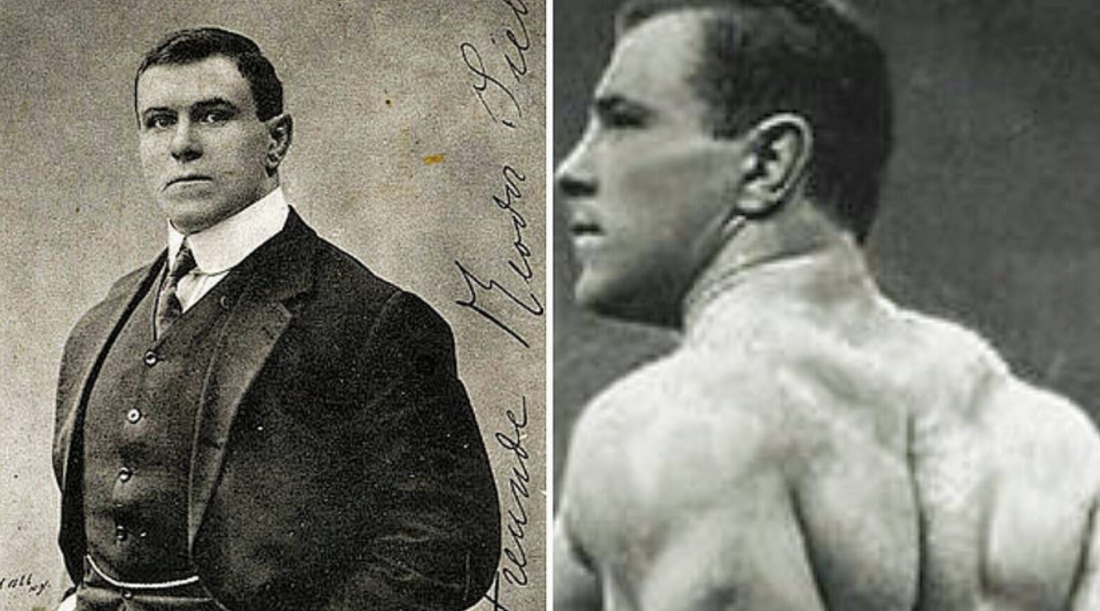The man who would come to be known as the "Russian Lion" was born in Dorpat. It's a small village by all accounts, but George Hackenschmidt grew up there with his parents and two siblings. His father was from Estonia, while his mother had roots not just in her home country of Sweden—she also boasted Estonian ancestry on both sides!.
From a young age, Georg Hackenschmidt's athletic prowess was undeniable. As an infant in Dorpat he would always sleep with his hands balled into fists and it is said that the family doctor could not get him to release them until he started wearing gloves at night. He later went on to win gold medals for wrestling in both Athens (1896) and Paris (1900).

The son of parents who were of small stature themselves, from an early age Hackenschmidt seemed destined for greatness as regards athletics- which history has borne out.
The young man's feats of strength and athleticism astounded his teachers. He could lift a small horse with one hand overhead, he could pull a 335-pound barbell from the floor to his chest and press it overhead, bridging on his neck. In 1902, he jumped 100 times over a table with his feet tied together. He set several records in weight lifting and was considered both the strongest and the best-developed man in the world.

The world champion of wrestling, Hackenschmidt was a beast when it came to any tournament he entered. He won the Moscow and St. Petersburg tournaments in 1900 with ease, defeating all contenders throughout his time there before taking on an even bigger challenge--the World Championships in both Vienna and Paris the same year. The Russian Lion was becoming the singular champion in the new style of wrestling called “Catch as Catch Can”, or Catch Wrestling. The sport would later influence Brazilian Jiu Jitsu and MMA at large.
After defeating world champions in both Greco Roman and freestyle wrestling, Hackenschmidt faced his ultimate rival - Iowa farm boy Frank Gotch. Wrestling historian Mike Chapman wrote, "In all of athletic history, there are a mere handful of rivalries between individual stars that have become almost as large as the sport itself. In boxing, such matchups as Sullivan–Corbett, Dempsey–Tunney, Louis–Conn and Ali–Frazier are a part of boxing folklore. In wrestling, there is only one: Gotch–Hackenschmidt".
Showing his contempt for American wrestling, Hackenschmidt didn’t train or participate in any promotional events leading up to the Chicago battle. His lack of any gas tank would prove to be his biggest failing in the match with Gotch.
As the two grapplers stood on their feet for over an hour, Gotch used his speed and rough tactics to wear Hackenschmidt down. His fast moves made it difficult for the champion to mount any type of counterattack, while underfoot he continued with a relentless attack that left Hackenshmidt's body covered in blood. When they finally hit the mat after sixty minutes of punishment both men were exhausted from lack of oxygen and fatigue but still determined to win.
Hackenschmidt complained to the referee about Gotch's dirty tactics of oiling up before a match and asked that he be forced to take a hot shower, but nothing came out of his request. The two fighters continued their battle for nearly two hours until Hackenshcmidt was pushed against the ropes by which point Gotch’s strength was too much for him. Hackenscmidt avoided Gotch’s dreaded toe hold, but essentially taped out after over two hours and refused a second match.

The two would meet again in Comiskey Park a few years later to similarly controversial results, but again drawing a massive crowd and record gate at the time. The knee injury he endured during this second fight effectively forced his retirement into writing and coaching.
His legacy has been cemented in the worlds of both weight lifting and wrestling. In wrestling, he introduced the body lock, or bear hug into popular use, and in weight lifting he invented the hack squat and was instrumental in using the bench press for sport-specific strength training. His book Man and Cosmic Antagonism to Mind and Spirit was the personal philosophy he developed while interned as a prisoner-of-war in Germany, which he survived. He later died in London in 1968 at the age of 90.
